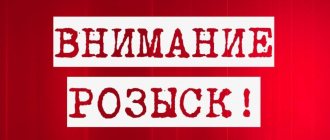Every employer may encounter lack of qualifications, negligence, or simply frivolity of an employee, which may result in material losses for the employer. Moreover, the violation may not necessarily involve causing direct damage to the employer’s property. It is possible to recover material damages for violation of labor discipline as such.
There are ways to pre-trial resolve a conflict situation, but the employee does not always meet the employer halfway. Therefore, sometimes the employer has to file a claim and the proceedings develop into litigation. In this regard, the employer needs to approach the preparation and filing of the claim extremely carefully, since in case of any violations on his part, the court may side with the employee.
Do you want to figure it out, but don’t have time to read the article? Lawyers will help
Entrust the task to professionals. Lawyers will complete the order at the cost you specify
Solve the issue >
Drawing up a statement of claim for recovery of material damage
If it was not possible to resolve the conflict with the employee pre-trial, then the time comes for litigation. In the claim, the plaintiff indicates how the material damage was caused and what specific property it was caused, or what costs the employer incurred due to the employee’s misconduct.
The employer's evidence base can be witness testimony, expert opinions, circumstances of damage or other documented facts of the employee's guilt.
When filing a claim, the employer must attach a copy of the employment contract to the claim.
The statement of claim must be made in writing, by hand or using a computer. The contents of the claim must include:
- full name and location of the court;
- indication of the details of the plaintiff and defendant;
- subject of the application;
- grounds for filing a claim;
- cost of claim;
- data on attempts to resolve the conflict pre-trially;
- personal signature of the plaintiff and seal of the organization.
Indication of the claim price is a mandatory condition. It is quite difficult to calculate the amount of damage caused on your own, therefore, when drawing up a claim, it is better to seek help from specialist appraisers.
Limits on amounts collected from employees
Firstly, only direct damage can be demanded from an employee (Article 238 of the Labor Code of the Russian Federation). This is the amount by which the property has decreased/deteriorated, and/or the amount of costs that the employer will be forced to make to restore the previous situation (repairs, payments for damage to third parties).
Lost profits cannot be recovered from an employee. For example, if an employee breaks equipment, then repair costs (direct damage) are subject to recovery. The amount of income lost due to equipment downtime cannot be claimed.
Secondly, as a general rule, the employee must only reimburse an amount not exceeding his average monthly earnings (regardless of the actual amount of damage). Let us remind you that its calculation is made in accordance with the Regulations on the procedure for calculating the average salary, approved. Decree of the Government of the Russian Federation dated December 24, 2007 No. 922. The calculation takes into account the 12 months preceding the month the damage was caused, and if the time of occurrence of the damage cannot be determined, the 12 months preceding the discovery of the losses.
An exception is cases of full financial liability of the employee (an exhaustive list is given in Article 243 of the Labor Code of the Russian Federation). In these cases, the damage can be recovered in full.
Filing a claim for compensation for material damage
The place where a claim is filed is primarily determined by its cost. So, if the price of the claim is more than 50 thousand rubles, then the applicant applies to the district court at the place of residence of the defendant. If it is less than this amount, then the magistrate will consider the case.
The employer can file a claim against the employee no later than one year from the date of the damage.
An application to the court can be submitted by the plaintiff either in person, through an authorized representative or by mail. The main thing is to pay the state fee before filing and attach the corresponding receipt to the documentation attached to the claim. The amount of the state fee depends on the amount of the claim. You can calculate it on the official website of the Supreme Court. Pay - at a bank, post office or any other authority that accepts payments.
If the applicant presents compelling arguments and evidence confirming the employee’s guilt, the court will side with the plaintiff. However, the law provides for a number of situations in which an employee will be exempt from compensation for damage.
Thus, an employee is exempt from payments if:
- the damage was caused by unforeseen events that were beyond the control of the employee;
- an attempt to eliminate problems that caused damage threatened the life of the employee;
- the damage was caused by self-defense;
- material damage was partially or completely caused by the actions of the employer;
- the employee was released from liability by the employer.
Among other things, the court will exempt the employee from compensation for damage if the harm caused to the employer was the result of an ordinary economic risk or due to the emergence of production or technological innovations for which the employee was not properly prepared.
If the damage does not exceed the average salary of the employee
With such an amount of damage (or if liability is limited by it), the employer has the right, regardless of the employee’s consent, to make deductions from his salary by issuing an appropriate order in any form with reference to the results of the investigation.
Peculiarities:
- the period for issuing the order is 1 month from the date of determining the final amount of damage (i.e., signing the document based on the results of the inspection);
- the order must be familiarized to the employee against his signature;
- You can withhold no more than 20% of each amount paid to the employee (Part 1 of Article 138 of the Labor Code of the Russian Federation).
If an employee wishes to compensate for damage voluntarily, it is better not to resort to deductions, but to agree with him on the form, timing and procedure for compensation for damage. The main thing is that the employee’s consent is documented: in a separate agreement, in a statement, etc.
In the following cases, to compensate for damage even within the limits of average earnings, the employer will have to go to court:
- if the month deadline for issuing a collection order has been missed;
- if the employee quits before the full amount of damage is paid.
How to fight back in practice
Peter was the director of CJSC FCSR from 2000 to 2021.
From 2002 to 2021, the company implemented a project to reconstruct residential areas. To do this, the company attracted a co-investor in the person of Avanta LLC with an estimated investment volume of $350 million. Since Avanta did not attract the expected amounts, investment agreement No. 1 dated March 28, 2005. was dissolved in 2011.
But the need for investment has not disappeared. Therefore, FSCR entered into a new investment agreement No. 2 with Salpa LLC. By the way, in “Salpa” Peter acted as the final beneficiary. Taking into account all the agreements, Salpa had to contribute almost 27 billion rubles by December 31, 2014.
As a result, the investor was able to contribute only 3.5 billion. Moreover, it was later revealed that in order to transfer these same 3.5 yards, Salpa took out a loan from Promsvyazbank. At the same time, General Director Peter signed a guarantee agreement on behalf of FCSR for the specified amounts.
Since Salpa did not achieve the full volume of what was promised, in June 2016 FCSR terminated the contract with Salpa. And by January 2021, being the guarantor under the Salpy loan agreement, FCSR paid the bank almost 188 million.
Actually, these 188 lyams became the basis for collecting damages from Peter. In 2021, instead of Peter, a management company took over at the helm of the FCSR, which saw the amounts paid to the bank, became disgusted and went to war against Peter.
So what about the court?
All 3 instances were distinguished by amazing harmony and unanimity of the decision - the claim was denied.
The courts came to the conclusion that the main interest of director Peter, as the actual owner of both and "Salp"), was the implementation of the investment contract concluded by JSC FCSR with the city of Moscow.
The money Salpa received from the bank had its intended purpose - financing an investment project. Moreover, the deal for Peter to provide a guarantee on behalf of FCSR was not unprofitable. On the contrary, it was a necessary condition for attracting funds to CJSC FCSR for the implementation of an investment project.
And most importantly, to finance the project, Peter pledged almost all of his property to the bank: he provided a guarantee on his own behalf, and also pledged his shares (shares) in companies of which he was a participant.
Recovery of damages from the FSSP: current practical issues based on personal experience and more!
Recovery of damages from the bailiff service: current issues of practice.
Current legislation ensures the protection of the rights of the claimant, debtor and other persons when carrying out enforcement actions. Such protection can be implemented by filing a claim for compensation for damage caused by an illegal decision, action or inaction of a bailiff (hereinafter referred to as the FPI).
Of the total number of such claims, 3 groups of the most “popular” can be distinguished, namely:
- recovery of losses associated with restrictions on travel outside the Russian Federation;
- recovery of damages caused by illegal inaction of the private enterprise;
- recovery of losses associated with improper storage of seized property;
Let's look at each group. We start with restricting travel outside the Russian Federation, since in practice this, in our opinion, is the most common problem.
Article 67 of the Federal Law “On Enforcement Proceedings” dated October 2, 2007. No. 229-FZ (hereinafter referred to as Federal Law No. 229) SPI is granted the right to temporarily restrict the debtor’s travel outside the territory of the Russian Federation, and lists the categories of persons to whom this measure can be applied. The most common prisoners of this article are persistent non-payers of alimony, as well as persons with a total amount of other types of debt of more than 30,000 rubles. (for example, traffic police fines).
Due to the active introduction of various information systems into our lives, many operations in the FSSP are carried out using technical means, which, as everyone knows, can fail. There are many such disputes in judicial practice, when the debtor paid all the debts, purchased a vacation package, and once at the airport, was refused permission to leave the Russian Federation due to the FSSP ban on leaving. The vacation is hopelessly ruined, the money is wasted... And all because the FIR completed the enforcement proceedings, but forgot to send the resolution on lifting the travel restriction to the border service or sent it with violations.
In this case, when filing a claim for recovery of losses incurred (the cost of a trip and plane tickets), there is no difficulty in proving a cause-and-effect relationship between the illegal inaction of the bailiff and the fact of causing harm. (Appeal ruling of the St. Petersburg City Court in case No. 33-15629/2016; Decision of the Moscow District Court of Kaliningrad in case No. 2-3425/2017).
Another possible basis for filing claims is improper storage of seized property. For example, during search operations, a car was found in the debtor’s possession, which was seized and placed in the custody of the SSP. When seized, the car was in good condition, without any damage (the condition must be indicated in the act of seizure (inventory) of property, reflected in the formalized inventory card of the seized vehicle and the car inspection card). After the auction, the property remained unsold, and the bailiffs offered one of the creditors to take it to pay off the debt. However, at the time of handing over the car, mechanical damage is discovered. Article 86 of Federal Law No. 229 stipulates that storage of movable property can be carried out in the bailiff department, provided that their safety is ensured.
The bailiff did not ensure safety, the property was damaged, and the person to whom the car was transferred suffered losses. The amount of such damages will be determined accordingly by the expert, based on the cost of damaged parts and restoration repairs (Decision of the Leninsky District Court of Kostroma in case No. 2-1936/2017).
In the case of filing such a claim, there should also be no difficulties in proving a cause-and-effect relationship if all the necessary documents supporting the arguments are available (an act of seizure of property with its description; an act of transfer for safekeeping of the SSP, which indicates the bailiff’s obligation to ensure safety; the act of transferring property to a person accepting it to pay off a debt, with a description). When there are contradictory facts about the condition of the car “before” and “after”, it will not be possible to escape the responsibility of the SSP. For “we are responsible for what we protect”!
The third group of claims for damages seems to be the most interesting and deserves special attention.
Of course, we are all human and we all make mistakes sometimes, only some people make such mistakes as a result of inattention, and others intentionally. The basis for filing such a claim in court may be an action (inaction) of the legal entity, as a result of which any party to the enforcement proceedings suffered losses. Examples include not seizing the debtor’s bank accounts (as a result of which he could calmly dispose of funds at his own discretion), not imposing a ban on registration actions in relation to property, both movable and immovable (as a result of which the debtor sold and also disposed of the money at his own discretion) and other things.
Different situations are possible with regard to bank accounts. For example, the SPI made requests to search for the debtor’s accounts, but upon receiving the information, did not issue or send an order to seize. As a result, all funds received go through enforcement proceedings, and these are obvious losses. It is for this reason that we strongly recommend issuing orders to search for accounts and seize the assets on them, and not first a decision to search for accounts, and then another order to seize them.
Another example is when a decree to seize accounts has been issued and sent to the bank, but the text of the decree contains incorrect data, as a result of which it becomes unexecuted.
The most important thing when filing such a claim in court is to prove the cause-and-effect relationship between the actions of the bailiff and the fact of the harm caused. Often, courts refuse to satisfy claims only because such a connection has not been proven, that it was these actions that made it impossible to collect and enforce the court decision. The claimant must work hard to ensure that the decision is made in his favor. From the very beginning of the initiation of enforcement proceedings, it is necessary to closely monitor the actions of the investigator, control all the timing of certain activities, and in case of violations of the law, appeal them. Such activity will be a powerful argument for the collector to be vigilant in relation to the bailiffs. After all, water does not flow under a lying stone. Therefore, it will not be possible to just sit still and after the end of the IP, for example, say that the IP was inactive and missed something.
In addition, during the trial, the question arises about whether there is currently a real possibility of executing the court decision, whether the debtor has any other property at the expense of which it is possible to obtain satisfaction. PPVS No. 50 places the burden of proof on the defendant (FSSP). And if information is provided that there is a share in the apartment (which is considered the only housing) or some “penny” has been deposited on the OSB deposit, the courts conclude that the possibility of collection has not been lost and issue a refusal. Therefore, if you intend to file a claim for recovery of losses caused by the actions or inaction of bailiffs, you must prove not only the cause-and-effect relationship, but also your good faith and activity in conducting this enforcement proceedings (Decision of the Arbitration Court of the Kostroma Region in case No. A31-8167/ 2015; Decision of the Kirovsky District Court of Yaroslavl in case No. 2-23/2018).
Some judges have begun to use the term “professional debtor” and use this to justify their refusal to recover damages from the FSSP. The professionalism of the debtor is manifested in the opening of a large number of accounts in different banks and the alleged impossibility of the SPI to find all accounts in a timely manner and write off DS from them. We cannot agree with this approach, since SPI currently has a huge number of tools for tracing accounts and sources of income of debtors! Therefore, using the above term, judges, on the contrary, must satisfy claims for damages, confirming the unprofessionalism of the IPI!
And, of course, we recommend that everyone who is planning to sue the FSSP look for a way to go to the AS, since there is not much order in the SOYU yet. The main criteria for delimiting the subject-matter competence of courts of general jurisdiction and arbitration courts on the request to recognize illegal actions (inaction) of a legal action are not only the subject composition or economic nature of the dispute, but also which court (general jurisdiction or arbitration) issued the executive document or in which court (general jurisdiction or arbitration) it is possible to challenge a non-judicial executive document -chch. 2 and 3 tbsp. 128 of the Federal Law of October 2, 2007 N 229-FZ “On Enforcement Proceedings”. Therefore, if a claim for compensation for damage caused by the actions (inaction) of a legal entity or an individual entrepreneur within the framework of enforcement proceedings initiated under an executive document issued by a court of general jurisdiction, according to which the debtor is an individual, was filed by a claimant - a legal entity or an individual entrepreneur, then when considering this property dispute the legality of these actions must be assessed by a court of general jurisdiction (Definition of the AS YaO in case No. A82-10410/2016).
To summarize, we can say that the practice of collecting damages from the FSSP is quite diverse in terms of the grounds for appeal and reasons for refusal. And if you go for victory, then only after certain preparation, with irrefutable evidence and arguments, so that the court does not have the slightest desire to refuse! Amat Victoria Curam!
Limitations on Damages
Guaranteed freedom of contract allows citizens to enter into contracts on any terms, as long as these terms do not contradict the law. Thus, limitation of damages is possible either by the terms of the contract or by the law itself.
Certain branches of law limit the amount of liability for damage. For example, compensation for losses by an employee should not exceed his average monthly earnings. Even if the contract specifies a different amount of compensation for damages, the mandatory rule of law will apply.
Also, the amount of damages may be specified in the contract itself. For example, damages caused are subject to compensation, but not more than 10% of the amount under the contract. Or the amount of compensation may be specified as a fixed amount. Also, contractual obligations often separately limit the type of losses subject to compensation - compensation only for actual damage.
Unreasonableness and bad faith
The director's unreasonableness in causing losses is considered proven if he:
Made a decision without taking into account relevant information known to him.
Example 1: Petya and his “Romashka” planned to purchase a couple of tons of paint from “Oblachka”. Petya knew for sure that “Oblachko” had been delaying deliveries for six months, stupidly cheating its customers after receiving the money, and still signed the deal. At the same time, he believed that they would definitely not do this to him.
As a result: the contract was signed, the money was transferred, the paint was not supplied, “Romashka” ended up with money, and Petya suffered losses.
Did not take steps to obtain relevant information before making a decision.
Example 2: Petya and his “Chamomile” still want to buy paint, but they don’t know from whom. On the Internet, Petya comes across “Cloud”. At the same time, he learned about “Oblachka” for the first time, he had never worked with it before, and no one from his circle had heard of it.
Petya reads the “Oblachka” website, where “Oblachko” portrays itself as the coolest, top-quality paint supplier. Moreover, when you call, the Oblachka employee says that they are super-duper-cool. Without requesting the company’s reports, without checking information about the courts regarding the supplier, or at least reviews about the company, Petya purchases not just a couple, but tens of tons of paint at once. You know the result.
Concluded a transaction in violation of the usual procedures for a legal entity.
Example 3: Petya with “Chamomile” in search of paint. They come across the website “Oblachko”, where there is a super offer - 50 tons of paint at a price of 25 tons and an advance payment of only 200,000 rubles. But an important condition is that the offer is valid only until the end of the day. Pete breaks the roof, he places an order.
And at first glance, everything seems to be “ok”. But the paint is filthy, these 50 tons didn’t cost even 100 rubles. And Petya completed the deal without the consent of the legal entity. department, accounting and painter Vasya. And the regulations of “Romashka” clearly state: any deal worth more than 80 rubles must be approved by all circles of the bureaucracy. Result - “Romashka” intervened, Petya pays.
The dishonesty of the director’s actions (inaction) is considered proven when he:
Acted in the presence of a conflict of interest, information about which was not disclosed.
Example 4: Peter is still the director of Romashka, while Romashka sells cars. Peter decides to sell 100 cars to “Tulpanchik”, in which Peter’s wife is the founder. The transaction is made at a price of 600 rubles/car, instead of the standard 1000 rubles with other buyers.
If in the future “Tulpanchik” sells cars for 300 rubles, in general, everything will be ok. If Tulip sells them for 1000 rubles/car, Petya will be in trouble, because he did not inform the founders about the conflict of interest. More precisely, about the benefit of your family.
Hid reliable information about the transaction from the participants of the legal entity.
Example 5: Petya and “Romashka” still want to buy paint. Petya decides to buy Tulip paint. The paint is cheap, but of lousy quality - Petya knows this for sure. The issue of purchase is submitted for approval by the members of the Society. At the meeting, Petya withholds information about the reasons for the low cost. As a result, we bought the paint, used it, and after a month it peeled off. The participants conducted an examination, where the disgusting quality emerged. Since Petya made a deal, hiding reliable information about it, it means... “Petya, come here!”
Entered into a transaction without the approval required by law or charter.
Example 6: Petya took and concluded a deal to buy paint for 200,000 rubles without the approval of the participants. Moreover, such a transaction was a major one for the company. The participants did not plan for such expenses at all and in such a volume. As a result - “ah-ya-ay, unscrupulous Petya. Reimburse!”
After leaving office, he did not hand over the documents, which led to unfavorable consequences.
Example 7: Petya decided to quit from Romashka. When transferring the reins to the new director, Petya forgot to hand over the documents on the deal with. As a result, “Technologists” went to court and collected the debt from “Romashka”, taking into account penalties and fines. Who is guilty? Peter!
Acted to the detriment of the interests of the legal entity, which he knew or should have known.
Example 8: Petya knew for certain that Pomoika LLC was a shell company, but he still transferred money to her for the purchase of paint, which... You know the rest.
Conditions for indemnification
Damage can be expressed in two forms - material and moral. Material damage is of a property nature, i.e. for example, situations related to damage to private property or refusal to transfer something under a contract (For example, the most common case arises with debt obligations - a claim for the collection of funds is a constant issue for consideration in court). Based on judicial practice, we can conclude that bona fide compensation for losses caused by the guilty party is extremely rare. Often, citizens and organizations have to compensate for damage in court, with the involvement of qualified lawyers.
Recovery of moral damages as a separate type of damage to health and personality:
As statistics show, the most common claims are for the recovery of moral damages, and there is extensive practice of such legal situations, for example, in the matter of recovery of moral damages and material damage caused to health in an accident. Moral damage is non-property in nature, it includes violation of human rights in the field of business reputation, as well as such terms as honor and dignity, or the infliction of mental harm to the victim by the actions of the guilty person.
The amount of compensation for moral damage depends on the amount of harm caused by the actions of the perpetrator, the category of private rights and freedoms that were damaged. Compensation for moral damage is the most difficult matter; this issue has many pitfalls, and legal intervention cannot be avoided here; this will greatly increase the likelihood of successful recovery. Based on practice, it is clear that the court’s assessment of moral damage occurs at a maximum of 10% of the amount requested by the plaintiff.
There are also statistics according to which indicators for the recovery of moral damages are increasing in a positive direction. An important role in resolving such situations is played by the business reputation, integrity, professionalism and business qualities of a lawyer. It is advisable to have a good evidence base on the fact of causing moral damage; if it is available, the likelihood of effective recovery increases.
ATTENTION: watch video arbitration disputes and subscribe to our YouTube right now to be able to receive free legal advice in the video comments:
Exemption from damages
A person whose actions or inactions caused damage may be released from liability and compensation for damages if they can prove the absence of intent to cause damage and provide evidence of due diligence in performing their actions.
Also, a criterion influencing the release of a person from compensation for losses is force majeure. This criterion is difficult to prove and must have such aspects as inevitability, extremeness, exclusivity, the fact that the parties could not foresee the occurrence of these consequences in their activities. These circumstances may include natural phenomena (such as floods, earthquakes), various military operations, mass diseases, etc.
In addition, after the force majeure circumstances have ended, the debtor must begin to fulfill his obligation. If it is impossible, he is obliged to notify the counterparty about this.







